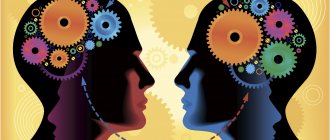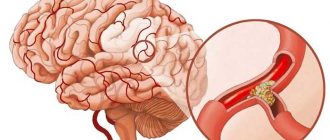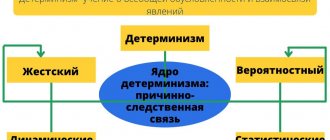Every person living on the planet certainly asks questions about his development at a certain period of his life, but unfortunately, most often the physical aspects of human health and strength come to the fore, but the development of mental capabilities is no less important, and sometimes can play a decisive role in the fate of the individual.
Human brain activity has not been fully studied and definitely consists of many processes that require an individual approach and their own methods of training and stimulation. However, at this stage we will consider such a broad concept as thinking and those effective ways of influencing it, which will lead to the formation of effective thinking in its various forms and directions.
Technologies for the development of thinking
Undoubtedly, to begin to develop, you do not need a lot of financial costs and any equipment as when playing sports, you only need a few free minutes a day (say, 15-30 minutes), consistency and effective use of the allocated time. Undoubtedly, the conditions for the development of thinking do not necessarily require special programs or only the indicated exercises; however, thinking simulators will help you rationally use your time. Their developers implement the latest research in this area for a comprehensive impact on each type of thinking. With this approach, everyone receives an even mental load, without depriving attention of that space of the brain that is rarely used in everyday work.
Types of thinking that need to be systematically developed:
- Boolean
- Abstract
- Creative
- Visually effective
- Visual-figurative
Why develop on your own if there is a school?
School programs develop thinking, but working with your child at home is no less important. And here’s why: lessons at school give children new knowledge, but it’s homework that helps them consolidate and assimilate it—it’s the same story with exercises to develop thinking.
In addition, at home the child feels more comfortable - with his family it is easier for him to share thoughts, make mistakes and try again. Here are some more reasons in favor of developing your thinking:
- Antistress. With developed thinking, it is easier to cope with emotions and solve difficult situations.
- Save time. Children with developed thinking know how to set priorities and strive to manage their time themselves.
- Creativity. Non-standard ideas and new solutions are in demand both at school and beyond. Developed thinking helps to see where the border of stereotypes and norms lies - and when it is appropriate to go beyond them.
- Social implementation. Underdeveloped thinking limits potential. To become a physicist, in addition to good grades at school, you also need diligence and motivation to enter a university and complete your studies. It’s the same with work - specialists with flexible minds have more opportunities compared to those who only have knowledge and experience, but do not have the necessary skills.
Logical thinking
This is perhaps the most popular part of the mental process, which is remembered first and many simulators are offered for its development. The approach to this type should be comprehensive, but it is worth understanding that this systematization does not reflect a complete picture of all the processes inherent in logical thinking. Therefore, let us consider those components of the process under study, on which development work will be carried out in the future.
- Analysis is an understanding of the structure of things, the ability to mentally divide something down to the smallest components and find connections between them. Whether it is the structure of living tissue, the chemical composition of a material, or a chain of events leading to one result, analysis will help to understand the essence of what is happening down to the smallest detail.
- Comparison is the ability to accurately highlight all similar and opposite elements of things, events, concepts. Even unrelated objects can have common features or be completely different, and to correctly classify them, it is necessary to develop this ability.
- Synthesis is the creation of one general structure from its individual parts, sometimes in a different order or combination than it was before. This ability extends to both physical and abstract objects, as well as chains of events that can be interpreted in different ways. Training the ability to synthesize is underestimated and important, it helps to see different connections in seemingly obvious things.
- Abstraction is the use of abstract concepts in the thought process to replace specific images. In this case, a person consciously distracts himself from unimportant details in order to see the whole picture.
Methods for developing logical thinking are quite simple and include a lot of exercises, which are not only collected in simulators, but are also available in a separate version to everyone who wants to develop:
- Reading is an easy way to influence your thinking abilities, and the genre and style of the material is not so important. The reader learns to process the information received, analyze it, draw preliminary conclusions, and correct them in the process of obtaining new information. It is difficult to imagine a developing personality who does not read at all; this is a small but very important step in self-development.
- Logic games are an opportunity to combine a pleasant pastime with a useful activity for the mind. There are many such exercises and they are presented both in digital versions and in physical board games.
- Online simulators are the same exciting classes collected in one place, but they already offer an effective, quick analysis of your actions and are aimed at improving your results.
- Logical chains are a simple activity that is accessible even to children; its essence is to, from a chain of pre-written words, reasonably cross out the unnecessary things that are not connected with the rest.
- Logical connection is a task that asks you to find between, at first glance, completely different words, as many facts as possible that unite them.
- Keeping a diary is a very useful habit that allows you to analyze the events that have passed during the day and express them in writing, give them your assessment and suggest the reasons for this result.
- Sentences with unrelated words - as the name suggests, you need to construct a sentence that is as interesting and attractive as possible with several unrelated words that are thought up and written down in advance. The number of such words can regulate the difficulty level of the exercise.
How to develop the thinking of middle school students
Draw emotions on the face
Invite your child to draw faces with different emotions. You can name the emotions yourself or ask your child to remember different situations during the day and draw what he felt at those moments.
By drawing sad, happy and angry faces, the child learns to recognize external signals of emotions - which just helps strengthen theoretical thinking and, along with it, emotional intelligence. This happens due to the fact that the child analyzes his feelings and the reactions of other people.
Make up a story
Make up a story with your child. Start with a simple sentence, for example: “Once upon a time there was a cat...”. Let the child continue and say the next sentence, and so on in turns. Try to develop the story according to all the rules of drama, with a plot, climax and conclusion.
By choosing to continue the story, the child learns to boldly voice his fantasies. He develops creative and systematic thinking by consistently articulating his ideas while maintaining the overall meaning.
Play Fact or Fiction
Come up with a sentence with a realistic meaning (mom is preparing dinner) and ask your child whether this is true or fiction. Then say something unrealistic (the book goes home) and ask the same question. Invite your child to tell you true and false sentences.
This is how the child learns to compare reality and fantasy. Thanks to this, verbal-logical thinking develops through the analysis of words and sentences.
Play "Unreal Action"
Take any object and ask your child to imitate an action that we usually do not do with this object: play a mop like a guitar, carry a ball on his head like a crown. Guess what the child is portraying, ask him clarifying questions.
By figuring out how to depict an unusual action with a certain object, the child learns to implement non-standard ideas. At this moment, his flexible mind, together with an active imagination, develops visual-figurative and verbal-logical thinking.
Draw a mind map
Write any word or idea in the center of the sheet. For example, a city. Draw several arrows from it and mark what is in the city: houses, people, roads. Next, draw arrows from each word and determine the categories: what kind of houses there are (schools, residential buildings, factories, shops), what kind of people there are (adults and children, men and women). On the following arrows, mark what is in these houses (classrooms in schools, counters and fitting rooms in stores), what the townspeople do (walk, work). Continue down to the smallest details.
This exercise teaches you to see the whole, its parts and patterns. It gives a positive charge to creative and systematic thinking due to the work of both hemispheres of the brain.
Abstract thinking
It is often called verbal or verbal-logical, since it operates with words, and from a huge array of words, a person selects the most significant for a given situation and from them composes a short description in his head. In this process, all additional words and concepts that do not carry a key meaning are not taken into account, but only convey color or an emotional component.
Training verbal thinking is important for everyone, but especially for children who still have a lot to learn, and this ability will take the effectiveness and ease of learning to a new level.
This type, like the previous one, operates on several main components:
- Concept – groups of objects united by the same characteristics. In this case, each of the objects individually is not important, but only the key characteristics inherent in all of them.
- Judgment - can be described as a kind of incomplete conclusion, when a certain thought is affirmed and it is taken into account, but it does not cover the whole picture, but only one aspect.
- An inference is a full-fledged conclusion that is drawn based on all the judgments in a given topic.
Several effective exercises for developing abstract thinking:
- Repeat the sentence in other words - during the task, the meaning and details of the sentence should remain unchanged, but not a single word should be repeated. To achieve maximum efficiency, work on one sentence must be repeated as many times as possible, that is, come up with the maximum number of new phrases that convey the same idea.
- Remove an extra word - from a group of pre-prepared words, one does not fit into the general concept, it needs to be found and removed with reason.
- Find differences between pairs of words - the material is also prepared in advance; words grouped into pairs can be completely different, while during training you need to identify as many differences as possible, some of them are obvious, while others will have to be looked for.
- Words with complex letters - having chosen the least common letters in everyday life, you need to come up with as many words as possible using them.
Creative thinking
This is the ability to analyze and process information in a unique way and approach classic problems in a new way. This skill is inherent in every person from the very beginning; you just have to find a way to activate the dormant potential to achieve new results. Not met before. This potential helps not only in creating a new creative product, but also facilitates a person’s practical life, helping to always find a way out of the current situation, even when traditional methods are powerless.
The principles of improvement in this direction are well known and very popular at this time, but this does not mean that many people use them in their practice. All of them are based on the need to regularly meet new people, expand your horizons, and visit new places and activities. Constant, continuous learning on any scale is an essential component of success in this business, and improvisation and the desire for an ideal result will not keep you waiting long for excellent results.
To develop your creative qualities, you should pay attention to a few simple but effective exercises:
- Reproduction of images - to do this, remember several people you met throughout the day, imagine them in as much detail as possible, down to the smallest wrinkle on their face. Now make this image change its mood and facial expressions, smile at you, get angry or upset. To complicate this task, remember the nearest holiday or event where a group of people gathered. Recreate in your memory all the smallest details, including what each of them wore, the music that played, the taste of the treats and the smells in the air. You can also learn to recreate separate groups of images, according to one characteristic, for example, by color - you need to remember as many green vegetables as possible, then yellow, then red, or by taste - sweet, bitter, sour.
- Training your imagination is a favorite game for children, but it can also be a useful exercise for adults. Creating non-existent images in your head allows you to see previously familiar things from a completely different angle. This has a positive effect on the ability to find a way out of any situation and develops creativity in approaching any task. To train creative imagination, you need to imagine an object or concept or sign that is not alive in the real world, is not a person and is quite unambiguous in its essence. Next, in your imagination, you need to endow him with character, habits, good or evil disposition, favorite activities, why he does this or acts this way, imagine what this object would like to do, where he would prefer to live, with whom to be friends. At the very beginning of such exercises, there will be a slight conflict with the logical part of thinking, and this activity will seem stupid and useless to you, but this is an important tool in the development of creative imagination and creativity.
- Fiction stories are an exciting and rewarding activity that can also be fun. To begin with, come up with an incredible situation in a few words, for example: “dinosaurs suddenly came to life” or “snails enslaved the world”, and try to develop the theme as extensively as possible. Address not only the issues of one individual in such a situation, but also how it affected the world globally.
- Imagining a probable future is one of the tools for developing creativity in your personality, because you can imagine your future as plausible as possible, but at the same time the way you want. To make the task more specific, choose an exercise such as a letter to your great-great-grandchildren or a list of things that you would like to pass on to your descendants. You can also come up with a shopping checklist for the zombie apocalypse or the day when robots take over the world. Although such a process seems ridiculous, it helps to connect logic and imagination, and in your thinking everything that happens is reasoned and has a basis.
The role of images in mental activity
Divergent thinking - what is it?
The development of thinking begins in early preschool age. The child needs it to form vivid ideas about the world around him. However, this does not mean that adults do not need figurative memory. This skill is needed for:
- Storing in memory memories of bright events in life;
- Opportunities to enjoy music;
- Engage in dancing and other types of amateur performances;
- Creation of new works of art, literature, painting;
- Form a visual result of the activity in the mind, which allows you to speed up the process of achieving it;
- Creative approach to solving assigned problems.
Additional Information. Imaginative thinking does not guarantee absolute correspondence to the reality of the image that is stored in a person’s memory. The key points of what is seen or heard are recorded in the mind, the rest is thought out by the human brain on its own in a rational way. Therefore, the products of imaginative thinking are somewhat idealized.
Visual-effective thinking
This type of thought process is a product of the left hemisphere and consists of creating a copy of an existing object or object in the mind and identifying its properties and possible benefits, first in one’s imagination for subsequent application in reality. For simplicity, you can imagine a small child who, looking at an object and touching it, imagines where it will fit, whether it is edible or not, whether it can be thrown or hit with it. Adults also use this technique, going over in their heads the possible useful properties of an object, they imagine it in action and make a preliminary conclusion about its suitability for such use. This is clearly expressed when an adult is looking for something to replace a missing part or what to make it from.
This process is trained in all games where various combinations of moves are calculated, for example in chess or checkers, but there are also specially designed exercises:
- Determining the characteristics of an object - choose one of the objects lying in your room and try to imagine its weight. After that, check how it feels by picking it up and determine whether it’s how you imagined it. Also mentally determine its area and try to figure out the relationship with the area of your room. How many of these items will fit in one layer, but what about the volume? If you filled the whole room with such objects, how many would there be?
- Puzzles – both physical and virtual puzzles help develop visual and effective thinking. They force you to first perform actions several steps forward in your imagination, and then check the results in practice.
- A construction set is not only a desirable toy for children, but also a great way to come up with many different shapes and try to assemble them. This is a great workout for your brain, and the more details in the constructor, the better.
- Modeling figures , like a construction set, helps bring to life an object you previously conceived and try to make it exactly the way you imagined it. If you have the desire and time for such an activity, be sure to try it.
Exercises
Now let's play a little. I have selected interesting exercises for you to develop your thinking in a playful way.
Connecting the unconnected
A fun and exciting exercise for adults and children. Its essence is that you need to combine two completely unrelated concepts in one sentence. For example, a jellyfish and a computer. The more proposals you can come up with, the better.
This exercise is often used during castings for radio presenters. Representatives of this profession must be able to immediately jump from one topic to another and do it beautifully and naturally.
What options can you come up with with our example? At least this: “The computer screensaver had a picture of a jellyfish.” Or, for example: “Dima was sitting at the computer and dreaming of a sea full of jellyfish, crabs, and dolphins.” Now you try it. Once you understand this couple of concepts, take on the following:
- dog and microphone;
- tower and belt;
- bridge and button;
- lawnmower and flea;
- Moon and subbotnik.
Instructions
Imagine that aliens flew to Earth and decided to settle here. Their civilization is completely different from ours, so the most ordinary objects are a wonder to them. You need to write instructions for the most commonly used items to make life easier for guests.
For example, let's create instructions for a toothbrush.
- A toothbrush is a device for cleaning teeth.
- It should be used twice a day - morning and evening.
- Go into the bathroom, stand in front of the mirror, take the brush in your hand and wet it with tap water.
- Then squeeze some toothpaste onto it and bring it to your teeth.
- Make rotational movements to remove dirt from your teeth for three minutes.
- After that, wash it in running water and put it back in place.
As you can see, everything is simple. Now it's your turn to write the instructions. Here's a list of items to get you started: comb, fork, key, glasses, chair, soap.
Two events
Between two events that, at first glance, are in no way connected with each other, you need to stretch a logical chain of reasoning in order to get a coherent and coherent story. Let's take the following events:
- A dog whined pitifully in the yard.
- The ship's mast was struck by lightning and a fire started on deck.
Here’s what I got: “A dog whined pitifully in the yard. Jack realized that he could no longer endure this dull, monotonous life, and decided to go on an adventure. His uncle was a sea captain, and at night the boy secretly sneaked onto his ship moored in the port. In the morning he woke up from strong rocking and realized that the ship had already sailed and was caught in a strong storm. The mast of the ship was struck by lightning and a fire started on deck.”
I have prepared a few more pairs of events for you - practice!
- The phone rang in the boss's office. The car crashed into a pole at full speed.
- The rocket took off from the ground and soared into the sky. The boy put his hand in his pocket and found a note there.
- The man got out of the subway and went straight to the bookstore. A family of rhinos in Africa has given birth to a baby.
Logic chains
The best exercise for developing logic. Suitable for everyone - children, teenagers, students and adults. His goal is to learn to establish logical connections between objects and phenomena.
You will be presented with two different concepts. Your task is to identify what can connect them. An example is an apple and a dog.
- Both objects belong to living nature.
- Both contain water.
- Representatives of both species have been in space.
- Both can cause injury to a person, etc.
Other options: syringe and pie, skirt and deer, chicken and bench, milk and bulldozer, cloud and crocodile.
It's the other way around
For this exercise you will need a newspaper, magazine or, at worst, an online news portal. Take a catchy headline and swap the nouns in it. It was: “The Russian national team players returned home on bicycles.” It became: “Bicycles returned home on the Russian national team players.” Delirium is delirium.
Your task is to come up with a story that fits the title and makes it more or less meaningful. For example: “The Russian national team players decided to buy back the royal bicycles taken out of the country during the revolution and return them to their homeland.”
Visual-figurative thinking
This process helps in solving real-life problems and tasks without involving physical actions, but only with the help of images created from real objects in the head. Unlike creative imagination, objects created in the head actually exist and all that remains is to choose options for using them to solve the problem as effectively as possible.
An important task when training this process is to develop the ability to recreate accurate images of existing objects; several exercises have been selected for this:
- Reproducing a seen object in detail trains attentiveness and allows you to notice and retain more details in your memory in the future. To do this, remember any object or living object and try to describe it for yourself as accurately as possible, how many dots are on it, what color is it, what is the nature of the surface, are there corners and how many of them? The more details you can recreate, the more effectively your spatial thinking will be trained, bringing objects from the real world into your mental space.
- Description of a phenomenon from memory - we are talking about a real-life phenomenon that you witnessed. For example, describe the rain and thunderstorm, what is the smell? What is the temperature of the rain, is it cold or pleasant? And what is the temperature of the surrounding air compared to rain? What did the ground look like during the rain, what is the nature of the soil under your feet? The more details you can recreate, the more effective the training.
- Recent walk - remember your last walk and give as many answers as possible to various questions about its details: where was it? How many of you were there and what were you wearing? What sounds surrounded you and what were you talking about? Did you eat anything and what did it taste like? Such exercises can be developed and similar, they equally well activate the process of creating an image in your memory.
Does every person have the ability to think figuratively?
The development of imaginative thinking is of interest to many, but there are adults who are not confident in their abilities. It is necessary to understand that in human thinking some processes are carried out visually. Sometimes a person realizes that he operates with his past perceptions, their memories, as if they were real objects. To evaluate this feature, you can answer the following three questions:
- What material were your favorite shoes made of when you were 15? What did they feel like?
- How many windows do your grandmother (your grandfather, second cousin) have in the village house?
- What will the Latin letter S look like if it is “mirrored” in the opposite direction?
Typically, people who answer the first of these questions imagine the shoes they wore as a teenager, “touching” their surface in their mind's eye. As for the second question, a person usually retrieves the image of this house from memory, “walks around” it, counting the windows. As for the letter S, usually in the process of mentally “mirroring” it, a person mentally rotates it and “looks” at the result. These examples show that the same mental processes are involved in the process of reproducing images.
Human cognitive development
The entire human mental system requires constant development, starting from birth, and even certain genetic data, without development, can lead to degradation and loss. It was in this vein that the concept of cognitive thinking appeared, which literally means aimed at comprehensive development. Thus, by taking action to develop your thinking in different types and areas, you support cognitive development.
The concept of the human cognitive system is characterized by some basic properties, such as efficiency, algorithmicity, digestibility, adaptability and expressiveness. These are the components for constantly developing your thinking and obtaining positive results. According to research, each person, provided there is no damage, is born with approximately similar inclinations for cognitive development and his further success in this matter depends only on classes and exercises.
Ability to solve problems easily
We will look at a very good method for quickly solving problem situations, which is based on the use of imaginative thinking. First, let's figure out how we can solve problems in such an unusual way.
Creative people are able to resolve difficulties that arise very quickly, not only because their level of understanding of the problems is very deep. They can approach the issue in an unusual way and therefore easily get rid of misunderstandings.
How to solve a problem using imaginative thinking?
1. Visualize your situation in mental pictures.
For example, you notice that the business you are involved in is declining. Imagine it in the form of a tree that dries before your eyes.
2. Draw the missing images that will help correct the situation, and then select the real equivalent of the solution to the problem.
You see that this tree is getting too much sun (competition) and needs watering (new marketing tactics). You may feel that the soil needs to be fertilized or you may need to contact a gardening expert for advice. Or you decide to build a “roof” over the tree...
3. Give yourself time to rethink, and although you may not immediately understand what is best to do, after a while you will have an insight.
This is how this method works.











